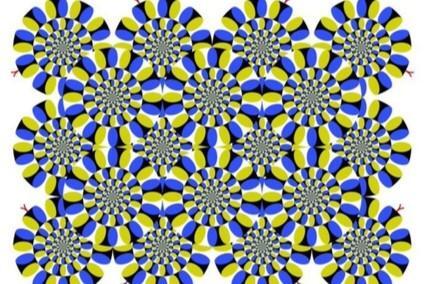
Radiologists more skilled at spotting optical illusions: Study
Optical illusions have long fascinated scientists and the general public alike. These clever tricks of the mind can make us question our perception of reality, leaving us wondering how our brains can be so easily deceived. A recent study published in the journal Scientific Reports has shed new light on our ability to spot optical illusions, and the results may surprise you. According to the study, radiologists and radiographers are more skilled at detecting optical illusions than people from other professions.
The study, which was conducted by a team of researchers from the University of California, Los Angeles (UCLA), aimed to investigate the relationship between expertise and the ability to recognize optical illusions. The researchers recruited a group of radiologists and radiographers, as well as a control group of individuals from other professions, and asked them to participate in a series of optical illusion tests.
The participants were shown a series of images that contained optical illusions, such as the famous ” Kanizsa triangle” illusion, which appears to be a triangle despite the fact that no triangle is actually present in the image. The participants were asked to identify the illusions and rate their confidence in their answers.
The results of the study were striking. The radiologists and radiographers were significantly better at detecting optical illusions than the control group. In fact, they were able to correctly identify the illusions more than 80% of the time, compared to around 60% for the control group.
But why did the radiologists and radiographers perform so well? The researchers believe that the answer lies in the way that they process visual information. Radiologists and radiographers are trained to focus on specific areas of interest, such as tumors or fractures, and to disregard irrelevant context. This process, known as “local processing bias,” is a by-product of their domain expertise.
In other words, radiologists and radiographers are trained to look at images in a very specific way, focusing on the important details and ignoring the rest. This skill is essential for their profession, as they need to be able to quickly and accurately identify abnormalities in medical images. The study suggests that this local processing bias may also be beneficial when it comes to recognizing optical illusions.
The researchers believe that the radiologists and radiographers’ success in detecting optical illusions may be due to their ability to “disregard the irrelevant context” and focus on the key features of the image. This allows them to recognize the illusion more quickly and accurately than others, who may be distracted by the irrelevant details in the image.
The study’s findings have important implications for our understanding of how we process visual information. They suggest that our ability to recognize optical illusions is not just a matter of general intelligence or visual acuity, but is also influenced by our domain expertise and the way that we process visual information.
So, what does this mean for the average person? While we may not be able to become experts at spotting optical illusions like radiologists and radiographers, we can still learn to improve our skills by practicing and paying attention to the way that we process visual information.
For example, try paying attention to the way that you look at images. Do you focus on the main features or do you get distracted by the background noise? Try to focus on the key details and ignore the rest. You may be surprised at how much better you become at recognizing optical illusions.
In conclusion, the study’s findings suggest that radiologists and radiographers are more skilled at spotting optical illusions than people from other professions. The researchers believe that this is due to their stronger local processing bias, which is a by-product of their domain expertise. The study’s findings have important implications for our understanding of how we process visual information and may have practical applications for improving our ability to recognize optical illusions.
News Source:
https://pubmed.ncbi.nlm.nih.gov/40075124/






